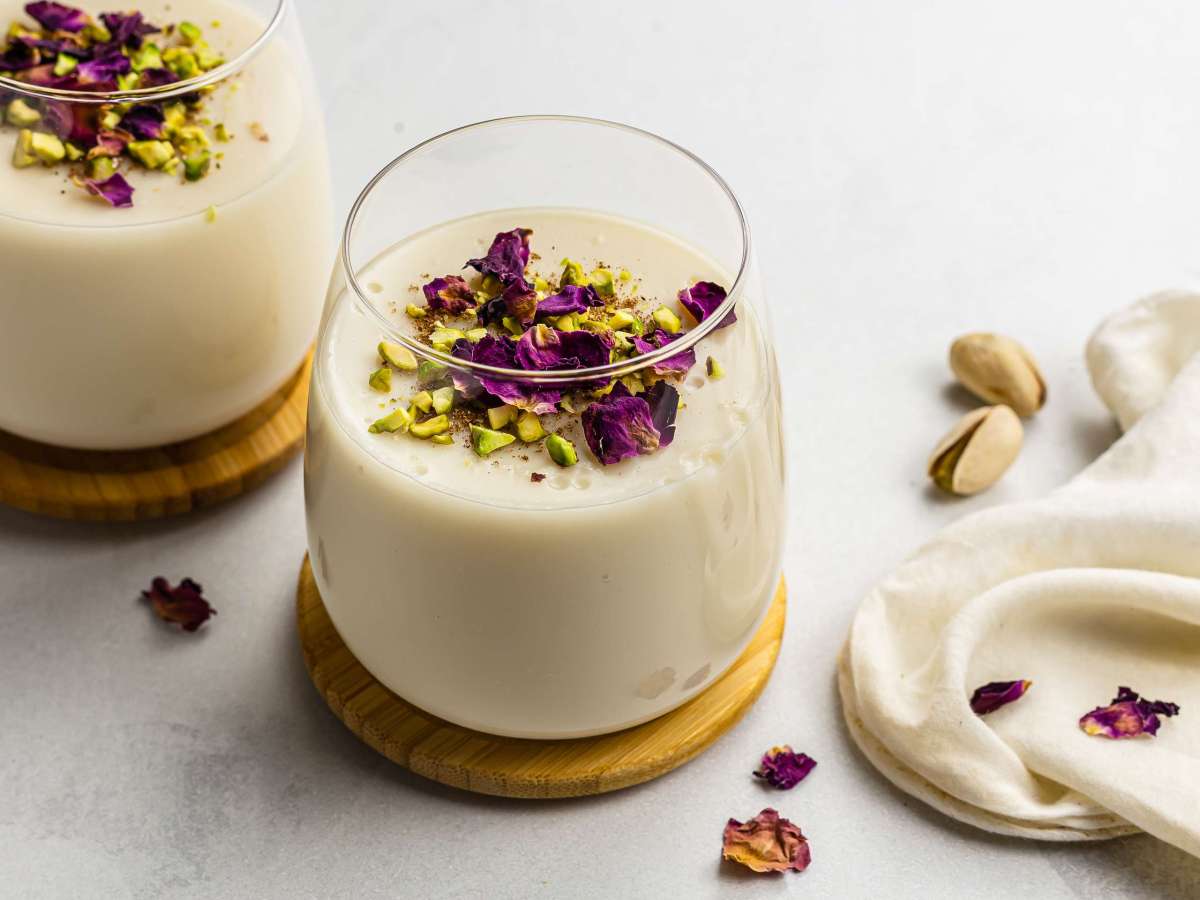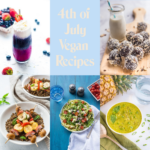Embark on a culinary journey through the vibrant world of Middle Eastern vegan cuisine. Discover a treasure trove of exotic flavors and aromatic spices, reimagined for a plant-based palate. From hearty stews simmered with fragrant herbs to refreshing salads bursting with vibrant colors and textures, this exploration unveils the surprising versatility and deliciousness of vegan Middle Eastern cooking. Prepare to be captivated by the rich history and cultural influences that shape these unique and satisfying dishes.
This guide delves into the heart of Middle Eastern vegan cuisine, offering a comprehensive look at popular dishes, regional variations, and practical, step-by-step recipes. We’ll uncover the secrets to adapting traditional recipes for vegan diets, explore creative presentation techniques, and provide insightful answers to frequently asked questions. Get ready to expand your culinary horizons and experience the magic of Middle Eastern flavors, all while embracing a compassionate and plant-based lifestyle.
Popular Middle Eastern Vegan Dishes
The vibrant culinary landscape of the Middle East offers a surprising abundance of naturally vegan dishes, often rooted in centuries-old traditions. These dishes showcase the region’s diverse ingredients and ingenious cooking techniques, resulting in flavorful and satisfying meals that are both healthy and delicious. Many traditional recipes are naturally vegan, reflecting a historical reliance on plant-based ingredients in various cultures across the region.
Ten Popular Middle Eastern Vegan Dishes
The following list highlights ten popular Middle Eastern vegan dishes, each offering a unique taste and texture experience. These dishes represent a small fraction of the vast array of vegan options available in the region’s cuisine.
- Muhammara: A vibrant red pepper dip, bursting with smoky flavor from roasted red peppers, walnuts, breadcrumbs, pomegranate molasses, and spices like cumin and paprika. Its rich, creamy texture makes it perfect with pita bread or vegetables.
- Baba Ghanoush: A creamy eggplant dip, smoky and subtly tangy. Roasted eggplant is blended with tahini, lemon juice, garlic, and olive oil, creating a velvety smooth consistency. The depth of flavor is enhanced by the subtle bitterness of the eggplant and the nutty tahini.
- Falafel: Crispy chickpea fritters, deep-fried until golden brown and served in pita bread with various toppings like hummus, tahini, and vegetables. The texture is delightfully crunchy on the outside and soft on the inside, complemented by the earthy flavor of the chickpeas and aromatic spices.
- Hummus: A classic Middle Eastern dip made from cooked chickpeas, tahini, lemon juice, garlic, and olive oil. Its smooth, creamy texture and nutty flavor make it a versatile accompaniment to various dishes and a staple in many Middle Eastern households.
- Tabbouleh: A refreshing salad made from finely chopped parsley, bulgur wheat, mint, tomatoes, and onions, dressed with lemon juice and olive oil. Its bright, herbaceous flavor and light, airy texture make it a perfect summer dish.
- Fattoush: A crunchy salad featuring toasted pita bread, mixed greens, tomatoes, cucumbers, and a tangy sumac dressing. The contrasting textures of the crispy bread and fresh vegetables, combined with the zesty dressing, create a delightful culinary experience.
- Mujadara: A hearty and comforting dish made from lentils, rice, and caramelized onions. The lentils provide a rich, earthy flavor, while the caramelized onions add a touch of sweetness and depth. The dish is often seasoned with simple spices like cumin and turmeric.
- Dolmas (Stuffed Grape Leaves): Grape leaves stuffed with a mixture of rice, herbs, and spices. The tangy grape leaves provide a refreshing contrast to the savory filling. Variations exist, with some using a combination of rice, herbs, and vegetables.
- Freekeh Salad: A salad made with freekeh (young green wheat roasted and cracked), vegetables, herbs, and a lemon-tahini dressing. The smoky flavor of the freekeh complements the freshness of the vegetables and the tangy dressing.
- Koshari: A hearty Egyptian street food consisting of rice, lentils, chickpeas, and macaroni, topped with a spicy tomato sauce, garlic vinegar, and crispy fried onions. The variety of textures and flavors makes it a uniquely satisfying dish.
Nutritional Comparison of Popular Middle Eastern Vegan Dishes (per serving)
Note: Nutritional values are approximate and can vary based on specific recipes and serving sizes. These values represent a general estimate.
| Dish | Calories (approx.) | Protein (grams, approx.) | Fiber (grams, approx.) |
|---|---|---|---|
| Hummus | 150-200 | 5-7 | 5-8 |
| Baba Ghanoush | 180-250 | 4-6 | 6-9 |
| Falafel (3 pieces) | 200-250 | 8-10 | 4-6 |
| Tabbouleh | 100-150 | 3-5 | 6-8 |
| Muhammara | 150-200 | 4-6 | 4-6 |
| Fattoush | 120-180 | 4-6 | 5-7 |
| Muajadara | 250-300 | 10-12 | 8-10 |
| Dolmas (5 pieces) | 150-200 | 5-7 | 4-6 |
| Freekeh Salad | 180-220 | 6-8 | 7-9 |
| Koshari | 350-450 | 15-20 | 10-12 |
Adapting Traditional Recipes for Vegan Diets

Many beloved Middle Eastern dishes rely on animal products, but with a little creativity and the right substitutions, these flavorful recipes can be enjoyed by vegans. The key lies in understanding the role of each ingredient and finding plant-based alternatives that mimic its texture and contribute similarly to the overall taste profile. This often involves a careful balance of spices and the use of alternative binding and thickening agents.
Transforming Traditional Dishes into Vegan Delights
This section details the adaptation of three popular Middle Eastern dishes, highlighting the ingredient substitutions and their impact on the final product. The focus is on maintaining the authentic flavors while adhering to a vegan lifestyle.
| Original Ingredient | Vegan Substitute | Effect on Flavor and Texture |
|---|---|---|
| Yogurt (in dishes like hummus or baba ghanoush) | Silken tofu or tahini blended with water and lemon juice | Tofu provides a creamy texture similar to yogurt, while tahini adds a richer, nuttier flavor. Lemon juice balances the richness and provides a tangy element. The overall texture might be slightly less tangy than traditional yogurt-based versions, but the creaminess remains. |
| Lamb (in kibbeh) | Bulgur wheat, finely chopped vegetables (such as mushrooms or zucchini), and lentils | The combination of bulgur, vegetables, and lentils creates a hearty and satisfying texture that mimics the denseness of the traditional lamb-based kibbeh. The vegetables add moisture and a subtle sweetness, while the lentils provide a protein boost. The flavor profile shifts to a more earthy and savory taste, lacking the inherent gaminess of lamb, but still retaining a depth of flavor. |
| Butter and ghee (in various pastries and breads) | Vegan butter or a blend of olive oil and applesauce | Vegan butter offers a similar texture and richness to dairy butter, although the flavor might be slightly different. A blend of olive oil and applesauce creates a moist and tender crumb, providing a subtle sweetness that complements many Middle Eastern pastries. The flavor profile is slightly less rich and buttery but still delivers a pleasant, soft texture. |
Presentation and Serving Suggestions
Elevating Middle Eastern vegan cuisine goes beyond the delicious flavors; it’s about crafting a visually stunning and memorable dining experience. The presentation of your dishes plays a crucial role in enhancing the overall enjoyment, transforming a simple meal into a feast for the eyes. Careful consideration of color, texture, and arrangement can significantly amplify the perception of taste and quality.
Plating techniques, garnishes, and thoughtful choices of accompaniments all contribute to creating an authentic and appealing Middle Eastern ambiance. By understanding these elements, you can transform your vegan creations into works of culinary art.
Plating Techniques and Garnishes for Three Vegan Dishes
We will explore the presentation of three distinct Middle Eastern vegan dishes: Muhammara (red pepper dip), a vibrant Fattoush salad, and a hearty lentil stew. Each dish will be showcased with specific plating and garnish suggestions to maximize its visual appeal.
Muhammara: This vibrant red pepper dip, rich in walnuts and pomegranate molasses, deserves a presentation that reflects its intense flavor. Serve it in a shallow, rustic bowl, perhaps a glazed terracotta bowl for an authentic touch. The deep crimson color of the muhammara is best complemented by a scattering of finely chopped fresh parsley, a drizzle of high-quality olive oil creating shimmering highlights, and a sprinkle of pomegranate seeds for a pop of jewel-toned color and contrasting texture. The bowl could be placed on a bed of shredded lettuce for a touch of freshness. The overall effect should be one of rustic elegance.
Fattoush Salad: This crunchy salad, with its medley of toasted pita bread, crisp vegetables, and a tangy sumac dressing, benefits from a more rustic, layered presentation. Instead of simply tossing everything together, arrange the components in a visually appealing manner. Start with a base of mixed greens, then layer toasted pita croutons, followed by colorful vegetables like tomatoes, cucumbers, and radishes. Drizzle the sumac dressing artfully over the salad, allowing it to cascade down the sides. Garnish with fresh mint leaves and a sprinkle of sumac powder for a final touch of vibrant color and intense aroma. The overall palette should be bright and fresh, reflecting the lively character of the salad.
Lentil Stew: A hearty lentil stew, infused with warming spices like cumin and coriander, benefits from a simple yet elegant presentation. Serve the stew in a deep bowl, allowing the rich, earthy tones to shine. A dollop of plain vegan yogurt or a swirl of tahini adds a creamy contrast in both texture and color. Garnish with a sprinkle of chopped fresh cilantro and a few toasted pine nuts for added visual interest and textural contrast. The overall presentation should be warm and inviting, reflecting the comforting nature of the stew.
Suitable Side Dishes and Accompaniments
Choosing the right accompaniments can significantly enhance the dining experience. The selection should complement the main dish both in terms of flavor and visual appeal.
For the Muhammara, consider serving it with warm pita bread, crudités like carrots and celery sticks, or toasted baguette slices. The contrasting textures and flavors will create a delightful combination.
The Fattoush salad, being a complete dish in itself, might not require many additional sides. However, a small serving of hummus or baba ghanoush could add another layer of flavor and visual interest. A simple side of rice or quinoa could also be considered for those who prefer a more substantial meal.
The lentil stew is perfectly complemented by a fluffy serving of couscous or a side of warm pita bread. A simple green salad with a light vinaigrette adds freshness and contrast to the hearty stew.
Enhancing Visual Appeal and Dining Experience
Careful attention to color palettes, textures, and aromas can elevate the dining experience. The use of contrasting colors, such as the vibrant red of the muhammara against the green of the parsley, creates visual interest. The combination of textures, such as the creamy smoothness of the muhammara and the crunch of the pomegranate seeds, adds another dimension to the sensory experience. The fragrant aromas of the spices in the lentil stew, combined with the fresh herbs, create a welcoming and appetizing atmosphere. Serving the dishes on attractive tableware, using appropriate lighting, and creating a pleasant dining ambiance all contribute to a more memorable and enjoyable experience. Consider using natural materials like wood or terracotta for serving dishes to reinforce the Middle Eastern theme.
The vibrant tapestry of Middle Eastern vegan cuisine offers a world of culinary adventure, brimming with exotic flavors and aromatic delights. From the hearty warmth of tagines to the refreshing lightness of salads, this exploration has showcased the rich diversity and adaptability of plant-based Middle Eastern cooking. By embracing these recipes and techniques, you can recreate the magic of these dishes in your own kitchen, sharing the unique and satisfying experience with friends and family. The journey into the heart of Middle Eastern vegan cuisine is one of discovery, creativity, and deliciousness – a testament to the boundless possibilities of plant-based cooking.
Q&A
What are some common vegan substitutes for Middle Eastern ingredients?
Common substitutes include tahini for yogurt or sour cream, aquafaba (chickpea brine) for egg whites, and vegetable broth for meat-based stocks.
Are Middle Eastern vegan dishes typically spicy?
Spiciness varies greatly depending on the region and specific dish. Some dishes are mild, while others incorporate chilies and other spices for a fiery kick.
Where can I find Middle Eastern vegan ingredients?
Many Middle Eastern ingredients are available at specialty grocery stores, international markets, and online retailers. Check your local stores for options like dried chickpeas, lentils, tahini, and various spices.
How do I store leftover Middle Eastern vegan dishes?
Store leftovers in airtight containers in the refrigerator for up to 3-4 days. Many dishes also freeze well.


